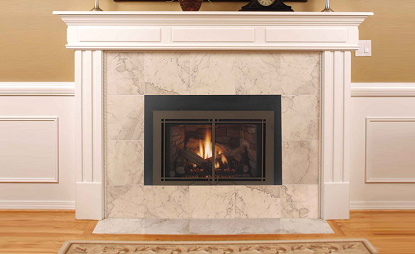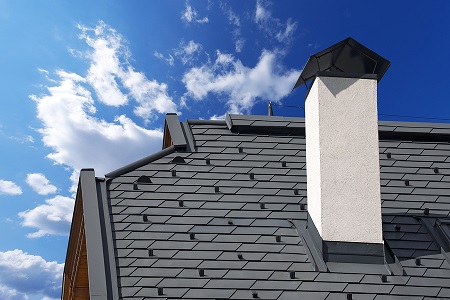Gas Appliances & Old Chimneys May be a Dangerous Mix

Victory Gas Fireplace Insert
When a homeowner purchases a new gas appliance and uses an existing chimney for venting, results can include damage and potential danger. The National Fire Protection Association and the Chimney Safety Institute of America both say that a thorough annual chimney inspection is important and can alert homeowners to these types of situations that can cause costly damage or pose a health risk. Gas heating appliances are growing in popularity, and for good reason. It’s essential, however, to ensure proper installation, which will include providing safe and adequate venting.
Clean-Burning Gas
Homeowners are often thrown off by the fact that gas heating systems do not leave messy deposits of highly flammable creosote in the chimney. Creosote is hazardous because it exposes the home to a dangerous chimney fire. While the visible soot is not a problem when using gas as a fuel, an unseen problem could be eating away at the inside of the chimney, particularly if the chimney isn’t lined or if the venting system is not the correct size for the appliance.
Gas appliances can deposit corrosive substances in your chimney, and the corrosive acids can eat away the inside of the lining. It’s possible that while the acids are wreaking havoc to the chimney, there are no outwardly visible signs. The corrosion could ultimately compromise your family’s safety and lower the value of your home.
Venting of Gas Appliances
High efficiency gas appliances are efficient because the warmth produced goes into the home and not up the chimney. With less heat in the venting system, it is essential that a proper draft be achieved. An adequate amount of air must be taken in for a gas appliance to work. Various complications arise when the flue is too large for the connector pipe to the appliance.
The air that your heating appliance takes in could contain the same acids in the air which cause acid rain. Air could also carry chlorides, picked up from pollution such as household cleaning products. When chlorides and water are combined, hydrochloric acid is formed. If water mixes with other air-borne pollutants or residues in the chimney, other acids can form.
During combustion, water vapor is always formed. Two cubic feet of water vapor are produced when burning one cubic foot of gas. If the venting system is not properly matched to the heating appliance, the water vapor doesn’t create a problem because it is carried out of the venting system fast enough and at a warm enough temperature that no condensation occurs in the flue. If, however, there is not enough heat, the moisture instead turns to liquid inside the flue. The inside of the flue can quickly deteriorate due to the acidic condensation.
Chimney liners can actually crumble as a result of corrosion caused by water condensation inside the flue. Debris from the damaged liner can create chimney blockage, which could result in exposing the household to deadly carbon monoxide fumes. The risk of this happening is increased if the chimney is unlined or in a state of disrepair.
Symptoms of Chimney Problems
 If the venting of your gas appliance is creating chimney damage, the following are some of the possible signs:
If the venting of your gas appliance is creating chimney damage, the following are some of the possible signs:
- Ceiling stains
- Stains on the chimney’s exterior
- Deterioration of the masonry bricks or mortar
- Blistered paint
- Peeling wallpaper
- Damp patches or wet spots on the interior or exterior walls of your home
The most reliable way to avoid problems with the venting of your gas appliance is to have it professionally installed according to manufacturer’s installation instructions.








